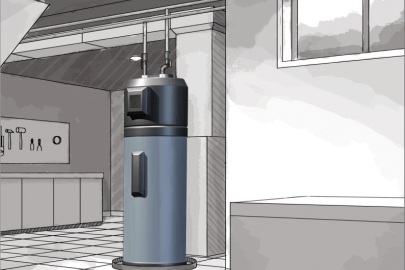What are your beliefs on What Kind of Maintenance Do Water Heaters Need??

Hot water is crucial for daily convenience, whether it's for a rejuvenating shower or washing recipes. To ensure your warm water system runs efficiently and lasts much longer, regular upkeep is key. This post offers sensible tips and understandings on how to keep your home's hot water system to prevent disruptions and expensive repairs.
Introduction
Maintaining your home's warm water system may appear complicated, yet with a couple of simple steps, you can guarantee it operates smoothly for several years to come. This guide covers every little thing from recognizing your hot water system to DIY upkeep tips and understanding when to call in specialist help.
Relevance of Preserving Your Warm Water System
Routine upkeep not only expands the life expectancy of your warm water system however additionally ensures it runs effectively. Disregarding maintenance can bring about reduced performance, higher power bills, and also premature failure of the system.
Indicators Your Hot Water System Demands Maintenance
Recognizing when your hot water system needs focus can avoid significant issues. Watch out for signs such as inconsistent water temperature level, weird noises from the heating system, or rusty water.
Flushing the Hot Water Heater
Flushing your water heater gets rid of sediment accumulation, boosting efficiency and extending its life.
Monitoring and Replacing Anode Rods
Anode rods protect against corrosion inside the storage tank. Evaluating and replacing them when worn is important.
Complicated Concerns Requiring Professional Assistance
Instances include major leakages, electric problems, or if your hot water heater is consistently underperforming.
Routine Expert Upkeep Conveniences
Professional maintenance can include complete inspections, tune-ups, and guaranteeing compliance with safety and security criteria.
Inspecting and Adjusting Temperature Settings
Adjusting the temperature settings ensures optimal performance and security.
DIY Tips for Upkeep
You can do numerous upkeep tasks yourself to maintain your warm water system in leading problem.
Looking for Leaks
Routinely inspect pipes and connections for leaks, as these can result in water damage and higher expenses.
Comprehending Your Warm Water System
Prior to diving right into upkeep jobs, it's practical to comprehend the basic components of your warm water system. Commonly, this consists of the hot water heater itself, pipes, anode rods, and temperature controls.
Monthly Maintenance Tasks
Normal month-to-month checks can aid catch minor issues before they escalate.
Testing Pressure Relief Valves
Evaluating the stress safety valve guarantees it operates correctly and avoids excessive pressure accumulation.
Shielding Pipes
Protecting warm water pipelines lowers heat loss and can save power.
When to Call a Specialist
While do it yourself upkeep is valuable, some problems need expert experience.
Verdict
Normal upkeep of your home's warm water system is crucial for effectiveness, long life, and expense savings. By following these pointers and recognizing when to seek professional aid, you can make sure a trustworthy supply of hot water without unexpected disturbances.
How to Maintain an Instant Hot Water Heater
Before tinkering with your hot water heater, make sure that it’s not powered on. You also have to turn off the main circuit breaker and shut off the main gas line to prevent accidents. Also turn off the water valves connected to your unit to prevent water from flowing into and out of the appliance. 2. When you’re done, you have to detach the purge valves’ caps. These look like the letter “T” and are situated on either side of the water valves. Doing so will release any pressure that has accumulated inside the valves while at the same time avoid hot water from shooting out and burning your skin. 3. When the purge valves’ caps are removed, you have to connect your hosing lines to the valves. Your unit should have come with three hoses but if it didn’t, you can purchase these things from any hardware or home repair shops. You can also get them from retail stores that sell water heating systems. Read the user’s manual and follow it to complete this task properly. When the hosing lines are connected, open the purge port’s valves. 4. You should never use harsh chemical cleaners or solutions when cleaning your unit. Make use of white vinegar instead. It should be undiluted and you’ll probably use about 2 gallons. 5. Now flush your water heater. This task should probably take about 40 minutes. We can’t give you specific directions for this because the procedure is carried out depending on the type, model and brand of your heater. With that being said, refer to the user’s manual. 6. When you’re done draining the unit, you have to turn off the purge port valves again. Remove the hosing lines that you earlier installed on each of the water valves. Put the valve caps (purge port) back in their respective places and be very careful so as not to damage the rubber discs that are found inside these caps. 7. Now that everything’s back in place, check your user’s manual again to find out how to reactivate your water heating system. 8. Once it is working, turn one of your hot water faucets on just to let air pass through the heater’s water supply pipes. Leave the tap on until water flows smoothly out of it. https://www.orrplumbing.com/blog/2014/september/how-to-maintain-an-instant-hot-water-heater/

I was guided to that editorial on Tips For Maintaining Your Hot Water Heater through a pal on our other web page. Appreciated our article? Please share it. Let others locate it. Thanks a lot for taking the time to read it.
Click Here To Find Out More